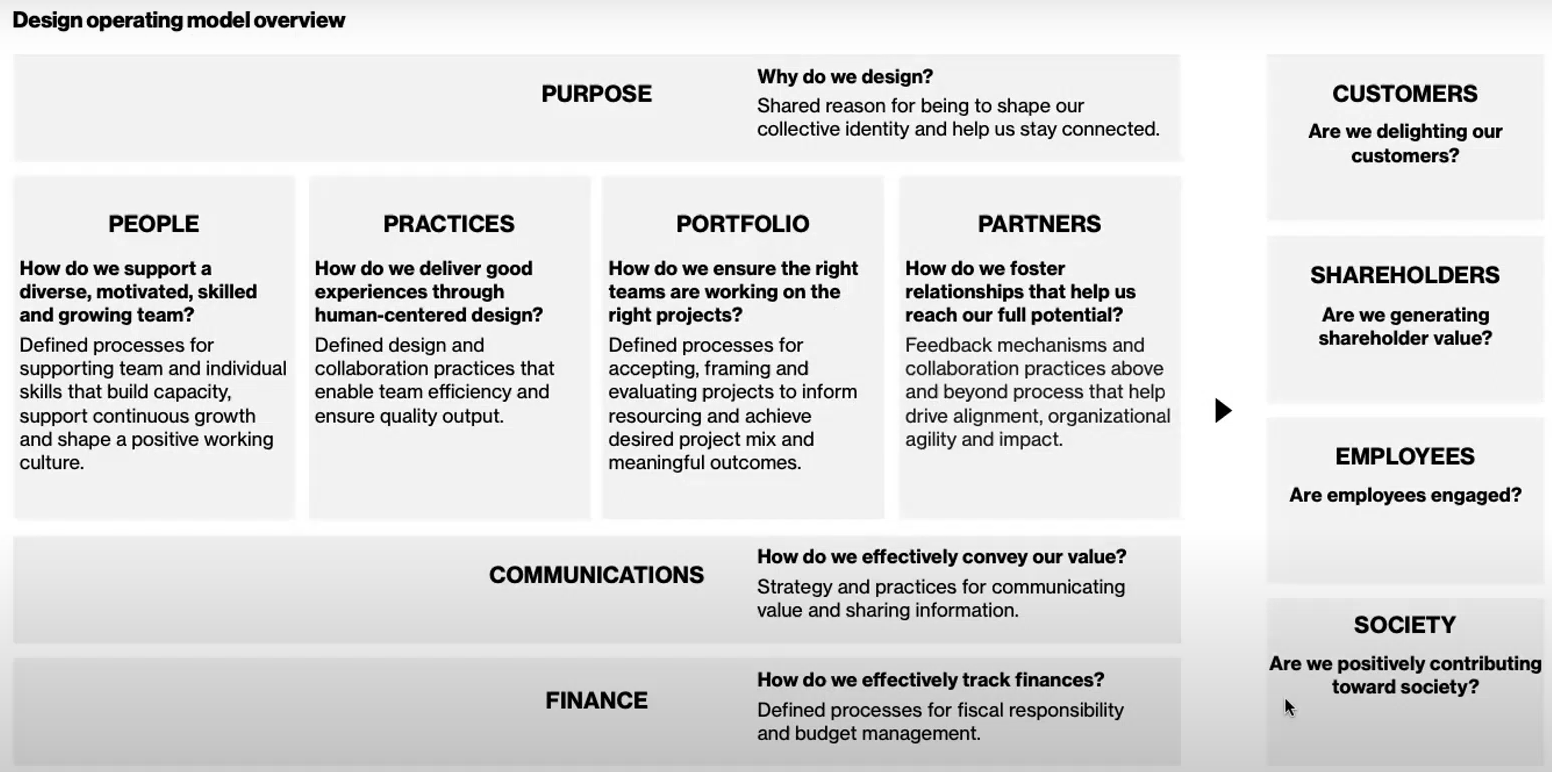By Janus Boye
As the Head of Design at telecommunications conglomerate Verizon in New York City, Richard Dalton leads a sizable team of 600 designers working at the forefront of Verizon's digital transformation. They aim to create exquisite experiences for their customers, but how do they do it?
In a recent member call, Richard offered a brief and informal Q&A session, where he covered DesignOps, strengthening the design muscle and some of the recent design trends.
Richard leads the Verizon Design Team - a blended employee/contractor/agency model - with members centred in NYC, NJ, and India and his team supports digital products and digital channels, but also hardware design. In previous roles, Richard was the head of design at Capital One, before that he also led the Design Practice at USAA (approximately 120 practitioners spread across the organisation) and way back in 2011, he was a highly rated Boye conference speaker in Philadelphia.
Below you can find my notes from the call and if you make it to the end, you can also find the entire recording.
How Verizon works with design
As we started the conversation, Richard quickly mentioned that Verizon, similar to many other organisations, is on an agile transformation journey. This includes the usual things: Being more nimble, more reactive, and a more agile mindset.
Specifically to design, and given Richard’s vast experience leading design, he pulled up the below slide which shows the latest iteration of the Verizon design operating model.
As Richard said during the conversation, this slide with the design operating model, in particular speaks to management, but Richard and his team has done many workshops to get the buy-in from the designers.
As you can see, it looks a bit like the famous strategy house with different pillars, but notice all the good questions that the slide asks. This provided for a good conversation and if you try to do it in your own organisation, getting to the answers will certainly help mature your design team.
As a huge inspiration to his work, Richard mentioned Phil Gilbert, the innovative engine of IBM’s design philosophy. At IBM he helped hire thousands of designers and Richard quoted Phil for this design leadership formula:
PPP = O
People, practice, places equals outcome
Notice also, how Richard’s design operating manual starts with why. This is naturally inspired by the bestselling business book Start with Why by Simon Sinek. To quote:
People don’t buy what you do; they buy why you do it
Turning to everyday work at Verizon, Richard mentioned that they have started scoring themselves within each element of the design operating model. This both offers a way to gauge internal improvements, and also the need to focus on growing the design muscle. As Richard said:
You can easily get too focused on the work. Don’t put 100% on that, because then you atrophy.
Finally, Richard also advised to get an internal understanding of what you are not working on. This can be a simple way to focus and free up power to move on what matters.
Making the organisation more design-centric
Turning to design trends, Richard mentioned a shift to changing businesses, government or really organisations of all types to be more design centric.
Richard actually prefers customer-centric or experience-led, as he doesn’t want to push design too far ahead. Instead he advises to come up with something in your organisation that gives design an equal voice.
In terms of designing the design team, he mixes his business and design skills with an entrepreneurial spirit to create a team that’s:
human-centred, business-savvy, and committed to fostering an inclusive, thriving culture.
If you want to push design in your organisation, there is no way to really do it without top down support. You need to get management onboard and as Richard said, it’s up to the design leaders to find ways to provide CEO’s with the required perspective on design and to show evidence of how design can both help the organisation and support what the CEO cares about.
Leading design from the marketing department
If there’s one thing, Richard has learned being a design leader for 20+ years, it is that we never really have enough resources to do the work that is being asked of us. That’s also the case in marketing, but being in marketing brings a different perspective compared to his work in other organisations, where design has not been placed under marketing.
He specifically did not say that marketing is the right or wrong place, but he said that to him, design leadership is also about connecting both left and right brain thinking and being in marketing had helped him mature that.
He also reminded us all that as designers, we need the ability to sense other people’s emotions and the ability to imagine what the customer or colleague might be thinking of feeling. Or in brief as he said:
Empathy is a design superpower
Learn more about design leadership
We have already shared a few stories of design leadership on this blog:
Design Leadership Requires Community Management Skills (Norwegian insurance firm Gjensidige)
How Universal Robots Works With UX And Design (a Danish manufacturer)
You can also meet peers and join our design leadership community or join one of our upcoming conferences.
Finally, do lean back and enjoy the recording below.


